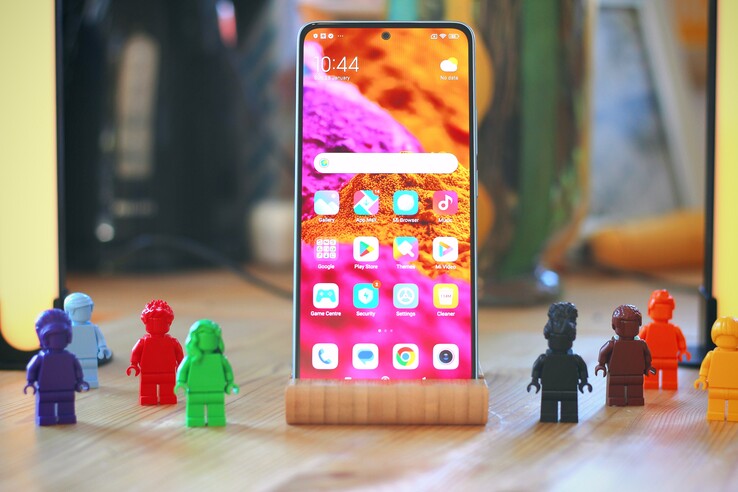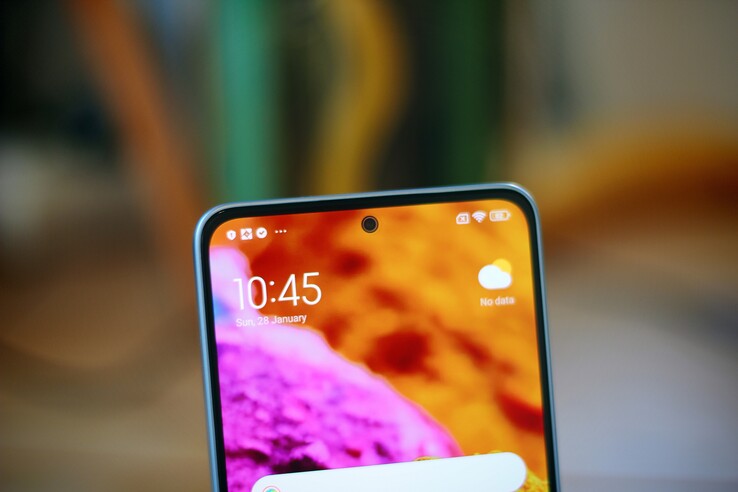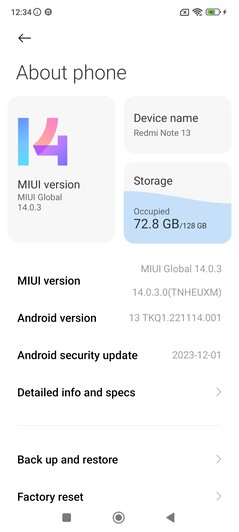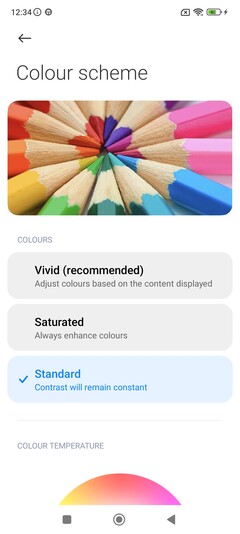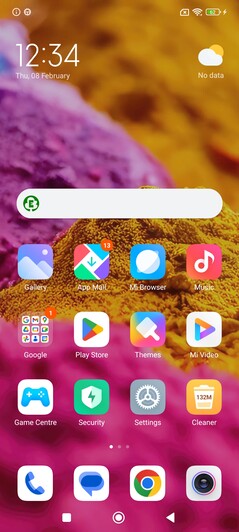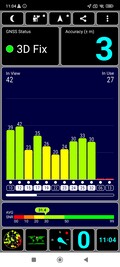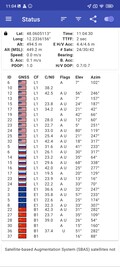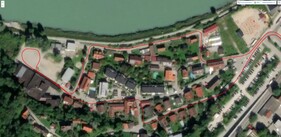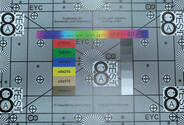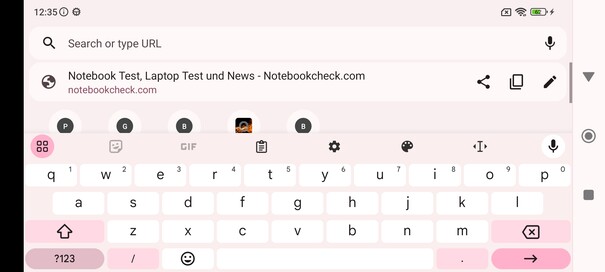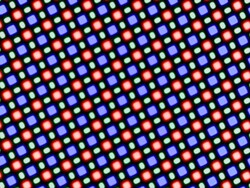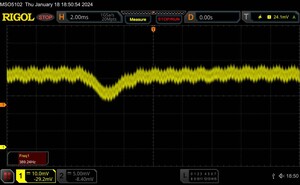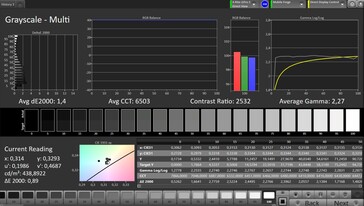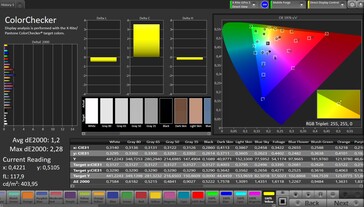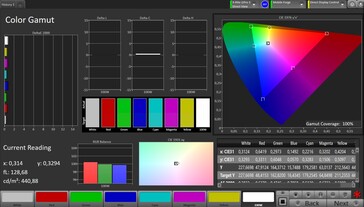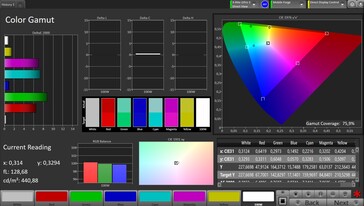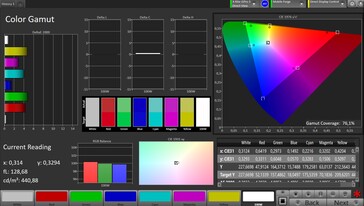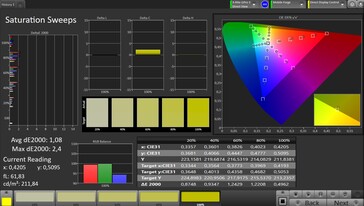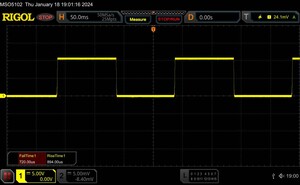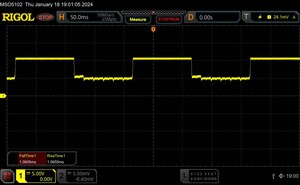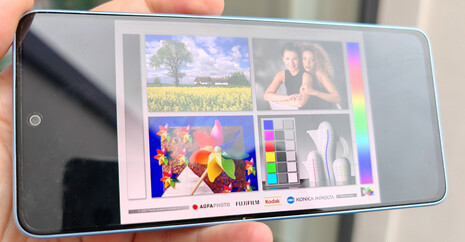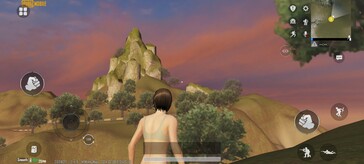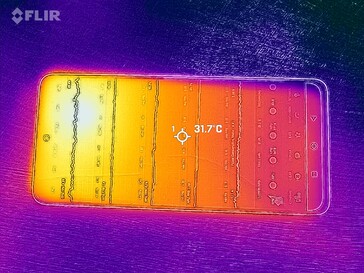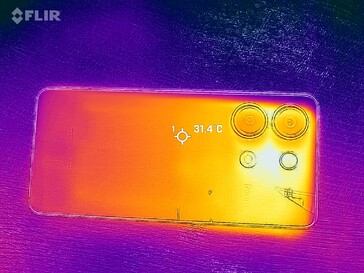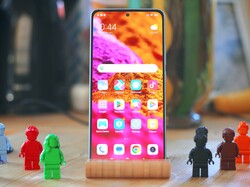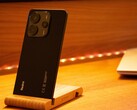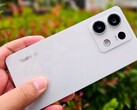Xiaomi Redmi Note 13 4G smartphone review – The phone with an impressive display for around US$200
Not everyone needs 5G, not every application requires your smartphone to feature a high-end SoC and not every user travels across the globe with their phone and needs to access the internet everywhere. This less demanding target market (which also keeps an eye on the price) is the exact reason why phones such as the Xiaomi Redmi Note 13 4G exist. In this review, we will be taking a closer look at this model.
It not only masters LTE as its fastest cellular network and has a typical mid-range processor powerful enough for sending texts, using social media and watching videos—in addition, it can be had for around US$200 and online, you can even sometimes get it cheaper.
However, other manufacturers have since brought out great affordable mid-range devices, many of which offer their own unique advantages. So, let's see whether the Xiaomi Redmi Note 13 4G comes out on top of its price range.
Possible competitors compared
Rating | Date | Model | Weight | Drive | Size | Resolution | Price |
|---|---|---|---|---|---|---|---|
| 80.2 % v7 (old) | 02 / 2024 | Xiaomi Redmi Note 13 4G SD 685, Adreno 610 | 188.5 g | 128 GB UFS 2.2 Flash | 6.67" | 2400x1080 | |
| 80.1 % v7 (old) | 05 / 2023 | Xiaomi Redmi Note 12 4G SD 685, Adreno 610 | 188 g | 128 GB UFS 2.2 Flash | 6.67" | 2400x1080 | |
| 75.9 % v7 (old) | 07 / 2023 | Samsung Galaxy A14 LTE Helio G80, Mali-G52 MP2 | 201 g | 64 GB eMMC Flash | 6.60" | 2408x1080 | |
| 78.7 % v7 (old) | 05 / 2023 | Nokia G22 T7200 (T606), Mali-G57 MP1 | 195 g | 64 GB UFS 2.2 Flash | 6.52" | 1600x720 | |
| 80.7 % v7 (old) | 10 / 2023 | Motorola Moto G54 Dimensity 7020, IMG BXM-8-256 | 177 g | 256 GB UFS 3.0 Flash | 6.50" | 2400x1080 |
Case – A modern look
When it comes to its case, Xiaomi has really made an effort. It now features a whole new design which makes itself especially known on the back: Although it is still made from plastic, it now features a satin finish. In Europe, you can get it in black, light blue and light green, whereas in other areas, you can also get a light colorway with an orange gradient.
The cameras are now placed individually and visually, they are no longer grouped together into a singular camera module. The see-through cover on the back is built well with even transitions to the frame, however, it is quite sensitive to collecting fingerprint marks.
The front also shows some changes compared to the predecessor model, the Xiaomi Redmi Note 12 4G: Slimmer bezels—especially along the bottom edge of the display—lead to a more modern design and slightly smaller measurements with the same screen diameter. The front camera is embedded directly in the screen as a punch-hole design.
The case is quite stable and only medium to high levels of pressure lead to some creaking noises when you twist the phone. It is IP54-protected against dust and water. This means foreign bodies can barely penetrate the case and splashes of water are also no problem for the device. On the other hand, you shouldn't plan on taking your phone with you on any diving trips.
Connectivity – Including an IR blaster
Three different storage variants of the smartphone are currently on offer:
- 6 GB RAM / 128 GB storage
- 8 GB RAM / 128 GB storage
- 8 GB RAM / 256 GB storage
Whether the 2 GB more RAM is actually worth it is a little questionable within this performance class. However, more data storage can actually be useful if you take a lot of photos, like to record video or want to download streaming content for long journeys.
As is the case on many Xiaomi phones, this one too features an infrared blaster which can transform your phone into a remote control for TVs, Blu-Ray players and other devices. The phone also has a 3.5-mm audio jack, meaning you can easily use older headphones without needing to reach for an adapter. NFC for contactless payment methods (such as Google Pay) is also on board.
There are two slots for nano-SIM cards within the card compartment. One can also accommodate a microSD card to expand the phone's storage, which means you'll have to choose whether to use a second SIM card or a microSD card. It doesn't feature eSIM support.
microSD card reader
In our test using our reference card (Angelbird V60), the phone's card reader didn't exactly prove to be very fast and was about on the same level as the predecessor's. There are much faster readers available within this price class. As a result, you should leave frequently used data within the device's internal storage—but SD cards can definitely still be used well as an archive.
| SD Card Reader - average JPG Copy Test (av. of 3 runs) | |
| Samsung Galaxy A14 LTE (Angelbird AV Pro V60) | |
| Motorola Moto G54 (Angelbird V60) | |
| Xiaomi Redmi Note 13 4G (Angelbird V60) | |
| Xiaomi Redmi Note 12 4G (Angelbird V60) | |
| Nokia G22 (Angelbird V60) | |
Cross Platform Disk Test (CPDT)
Software – Somewhat up-to-date but with a lot of bloatware
Xiaomi has named the phone's software as MIUI 14, however, it is still based on Android 13. The manufacturer hasn't stated how long the smartphone series is set to receive updates and it also hasn't indicated how frequently security patches will be delivered. At the time of testing, the latest patch was from December 2023, making it still somewhat up-to-date.
It's quite annoying to see how much advertizing Xiaomi has included within its own apps. You may be able to deactivate this but for many users, the option to do so is quite well hidden. The phone also comes with a lot of bloatware preinstalled which you will first have to remove if you want a clean system.
Communication and GNSS – No 5G but good location services
As its name already suggests, the Xiaomi Redmi Note 13 4G is no 5G smartphone. Instead, it has to make do with LTE as its fastest cellular standard. It doesn't support all too many frequencies, either, meaning you might run into some issues when attempting to access the internet via LTE on your long-distance travels.
During our test period, random samples showed the device's mobile data reception to be mostly good but not quite on the same level as more expensive smartphones.
WiFi 5 is the fastest WLAN standard mastered by the Xiaomi phone. This makes it on the same level as similarly priced devices and it achieves quite stable rates to be expected from this standard: In our test using the Asus ROG Rapture AXE11000 as a reference router, we measured between 300 and 380 MBit/s.
Close to the router, you have full signal strength but it still sometimes takes a while for websites to load completely. With a 10-meter distance to the router with 3 walls in between, you have access to about 3/4 of the signal strength and pages take a little longer to load.
| Networking | |
| Xiaomi Redmi Note 13 4G | |
| iperf3 receive AXE11000 | |
| iperf3 transmit AXE11000 | |
| Xiaomi Redmi Note 12 4G | |
| iperf3 receive AXE11000 | |
| iperf3 transmit AXE11000 | |
| Samsung Galaxy A14 LTE | |
| iperf3 receive AXE11000 | |
| iperf3 transmit AXE11000 | |
| Nokia G22 | |
| iperf3 receive AXE11000 | |
| iperf3 transmit AXE11000 | |
| Motorola Moto G54 | |
| iperf3 receive AXE11000 | |
| iperf3 transmit AXE11000 | |
| Average of class Smartphone | |
| iperf3 receive AXE11000 | |
| iperf3 transmit AXE11000 | |
The Xiaomi phone has access to all the big satellite networks for locating purposes. If you step outside, it only takes a few seconds and you are located with a 3-meter accuracy. This is a standard value for this price range and it ensures a pretty decent level of accuracy.
Of course, we wanted to check to see if this rings true in practical use, so we took the phone with us on a bike trip. We used the Garmin Venu 2 smartwatch as a comparison device as it boasts quite precise locating.
The Xiaomi Redmi Note 13 4G showed some slight inaccuracies in a few places, but these weren't that big an issue overall. We can subsequently recommend the smartphone for navigation purposes unless you rely on absolute accuracy.
Telephone features and call quality – Distanced conversations
Xiaomi uses the telephone app from Google on this smartphone. This should feel familiar to a lot of other Android users.
With the phone held up to our ear, conversations tended to sound a bit distanced but the person on the other end of the call could understand us well as long as we didn't speak too quietly. The microphone didn't transmit our voice totally clearly, however.
If you use the hands-free microphone and the phone's loudspeaker for conversations, they also do not sound quite as present, but you can still understand everything quite easily. Users of the Redmi Note 13 should not speak too quietly using this mode, either.
Cameras – Decent photo quality
108 megapixels on the Xiaomi Redmi Note 13 4G's main camera may sound like a lot, but it actually mostly only takes 12-megapixel shots. This means the camera groups 9 pixels together into one in order to take in more light.
The resulting photos could do with showing a bit more contrast and detail but in good lighting conditions, they are generally decent. We also like how very dark areas are lightened—here, the light parts of the picture don't dominate and dark areas still show some detail.
Videos can be recorded at a maximum of 1080p and 30fps on the phone's main camera. On the Motorola Moto G54, you can already record at 60 frames per second but apart from in this aspect, the Xiaomi is about class-average. Its autofocus isn't the quickest but its lighting adjustment works quite fast.
The smartphone also features an 8-megapixel ultra-wide-angle lens. Photos taken using this camera are nice snapshots but in total, they appear very grainy and with little detail. Furthermore, the phone has a 2-megapixel macro lens but due to its relatively low resolution, its photos aren't the most attractive.
The device's front-facing camera has a 16-megapixel resolution and in good lighting, it takes great selfies that still show some detail in darker areas and have good levels of detail in general.
Image comparison
Choose a scene and navigate within the first image. One click changes the position on touchscreens. One click on the zoomed-in image opens the original in a new window. The first image shows the scaled photograph of the test device.
Main camera plantMain camera surroundingsMain camera low lightWide-angle cameraWe also tested the main camera in our photo lab, where we were able to compare the camera's performance even better under fixed lighting conditions and with fixed subjects. At 1 lux illumination, the camera struggled to recognize details and delivered mostly black images.
In full studio lighting, you could see a clear blue tint on the photo as well as somewhat low sharpness and reduced contrast. Overall, however, these results are quite normal for an affordable mid-range phone.
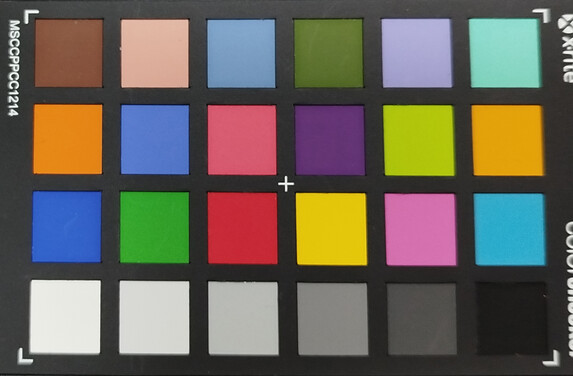
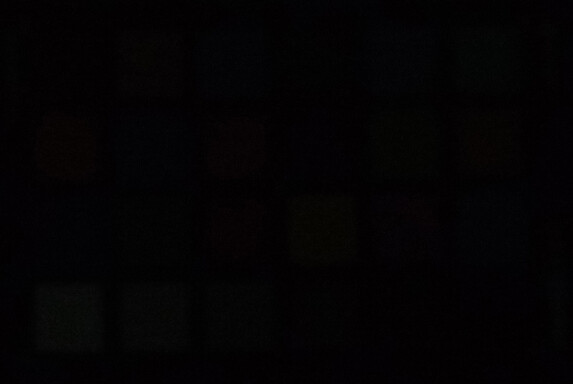
Accessories and warranty – Lush package
The phone comes with a lot of accessories: Aside from a charger and corresponding USB cable, you also get a silicone bumper and even a headset with a cable. Although its quality isn't the best, it is certainly good enough for the occasional conversation.
Online, the manufacturer doesn't offer any additional accessories specifically for this model. As it is quite a popular model, however, you will likely find a large number of cases and accessories from third-party suppliers.
In Europe (where we conducted this test), the manufacturer gives the phone a 24-month warranty.
Input devices & operation – Speedy touchscreen
The phone's touchscreen is scanned for touches up to 240 times per second and, as a result, can be operated very quickly. It is reliable right into the corners and along all the edges. If you only have one hand free, you can also switch to one-handed mode by swiping from the center to the left. It then reduces the size of the screen so that you can reach all areas more easily.
The hardware buttons on the right side of the device are well fitted, nice to touch but still easy to find. The fingerprint sensor sits behind the screen and corresponding markings appear when you lift the phone in standby or when the lock screen is displayed. Unlocking takes a second but it works reliably.
Facial recognition works just as reliably, however, it isn't quite as secure—as Xiaomi also states in a warning: The system can be overridden using masks or photos, as it is only a 2D facial recognition software.
Display – One class better
The display has always been a highlight of the Redmi Note series. Xiaomi uses high-quality AMOLED displays with a fast frame rate and high maximum brightness. This is also the case with the Redmi Note 13 4G: It has a 120-Hz panel with a brightness of up to 940 cd/m² when depicting full white. When depicting small areas of white, it actually gets even brighter.
Xiaomi also manages to outshine the competition in this price range, which is usually bright enough for everyday use but can't boast beautiful HDR content. The Redmi Note 13 4G does a much better job in this aspect.
Its color reproduction is also very good in "standard" mode: Our test using a spectrophotometer and CalMAN software revealed accurate grayscale depiction and only very slight color deviations. This mode can therefore also be used for working with colors professionally.
| |||||||||||||||||||||||||
Brightness Distribution: 96 %
Center on Battery: 940 cd/m²
Contrast: ∞:1 (Black: 0 cd/m²)
ΔE ColorChecker Calman: 1.2 | ∀{0.5-29.43 Ø4.79}
ΔE Greyscale Calman: 1.4 | ∀{0.09-98 Ø5}
100% sRGB (Calman 2D)
Gamma: 2.27
CCT: 6503 K
| Xiaomi Redmi Note 13 4G AMOLED, 2400x1080, 6.7" | Xiaomi Redmi Note 12 4G AMOLED, 2400x1080, 6.7" | Samsung Galaxy A14 LTE PLS, 2408x1080, 6.6" | Nokia G22 IPS, 1600x720, 6.5" | Motorola Moto G54 IPS, 2400x1080, 6.5" | |
|---|---|---|---|---|---|
| Screen | -22% | -342% | -137% | -118% | |
| Brightness middle (cd/m²) | 940 | 650 -31% | 465 -51% | 674 -28% | 492 -48% |
| Brightness (cd/m²) | 922 | 658 -29% | 439 -52% | 641 -30% | 470 -49% |
| Brightness Distribution (%) | 96 | 97 1% | 89 -7% | 90 -6% | 90 -6% |
| Black Level * (cd/m²) | 0.47 | 0.43 | 0.3 | ||
| Colorchecker dE 2000 * | 1.2 | 1.55 -29% | 8.5 -608% | 4.45 -271% | 3.9 -225% |
| Colorchecker dE 2000 max. * | 2.28 | 2.59 -14% | 15.8 -593% | 7.41 -225% | 6.26 -175% |
| Greyscale dE 2000 * | 1.4 | 1.8 -29% | 11.8 -743% | 5.1 -264% | 4.3 -207% |
| Gamma | 2.27 97% | 2.194 100% | 2.2 100% | 2.072 106% | 2.275 97% |
| CCT | 6503 100% | 6316 103% | 10757 60% | 7799 83% | 7656 85% |
| Contrast (:1) | 989 | 1567 | 1640 |
* ... smaller is better
Screen Flickering / PWM (Pulse-Width Modulation)
| Screen flickering / PWM detected | 389.2 Hz | ||
The display backlight flickers at 389.2 Hz (worst case, e.g., utilizing PWM) . The frequency of 389.2 Hz is relatively high, so most users sensitive to PWM should not notice any flickering. However, there are reports that some users are still sensitive to PWM at 500 Hz and above, so be aware. In comparison: 53 % of all tested devices do not use PWM to dim the display. If PWM was detected, an average of 8152 (minimum: 5 - maximum: 343500) Hz was measured. | |||
Measurement series with fixed zoom level and different brightness settings
We noted flickering at up to 389 Hz at low brightness levels. As a result, we would recommend that sensitive users try out the phone before purchasing to make sure longer use won't result in any issues.
Its response times are short, making the phone suitable for demanding users.
Display Response Times
| ↔ Response Time Black to White | ||
|---|---|---|
| 1.6 ms ... rise ↗ and fall ↘ combined | ↗ 0.7 ms rise | |
| ↘ 0.9 ms fall | ||
| The screen shows very fast response rates in our tests and should be very well suited for fast-paced gaming. In comparison, all tested devices range from 0.1 (minimum) to 240 (maximum) ms. » 8 % of all devices are better. This means that the measured response time is better than the average of all tested devices (20.3 ms). | ||
| ↔ Response Time 50% Grey to 80% Grey | ||
| 2.2 ms ... rise ↗ and fall ↘ combined | ↗ 1.1 ms rise | |
| ↘ 1.1 ms fall | ||
| The screen shows very fast response rates in our tests and should be very well suited for fast-paced gaming. In comparison, all tested devices range from 0.165 (minimum) to 636 (maximum) ms. » 10 % of all devices are better. This means that the measured response time is better than the average of all tested devices (31.7 ms). | ||
Performance – Sometimes with waiting times
The same as on the predecessor model, this year's version of the Xiaomi phone relies on the Qualcomm Snapdragon 685 as an SoC. The powerhouse of the smartphone was presented over three years ago, but it is made using the energy-efficient 6-nm process and should be powerful enough for everyday use. But is it really?
We have, of course, tested this objectively with the help of our benchmarks, and have added our subjective opinion on how the phone performed during our test period.
All-in-all, the system seems to be average for the price range: It neither offers extraordinary power, nor is it particularly slow. In everyday use, you will notice that this isn't a completely smooth system every now and again. However, for the most part, you can navigate through the apps quite quickly and only with some short loading times.
| UL Procyon AI Inference for Android - Overall Score NNAPI | |
| Average of class Smartphone (3769 - 81594, n=139, last 2 years) | |
| Motorola Moto G54 | |
| Xiaomi Redmi Note 13 4G | |
| Average Qualcomm Snapdragon 685 4G (4445 - 4615, n=2) | |
| Xiaomi Redmi Note 12 4G | |
| Samsung Galaxy A14 LTE | |
Simple graphics calculations should be possible to achieve smoothly in the Full-HD screen's native resolution. On the other hand, you shouldn't really expect anything more from the system, as the GFXBench test frame rates quickly sank below 30 fps when depicting slightly more modern graphics.
GFXBench (DX / GLBenchmark) 2.7: T-Rex Onscreen | 1920x1080 T-Rex Offscreen
GFXBench 3.0: on screen Manhattan Onscreen OGL | 1920x1080 1080p Manhattan Offscreen
GFXBench 3.1: on screen Manhattan ES 3.1 Onscreen | 1920x1080 Manhattan ES 3.1 Offscreen
GFXBench: on screen Car Chase Onscreen | 1920x1080 Car Chase Offscreen | on screen Aztec Ruins High Tier Onscreen | 2560x1440 Aztec Ruins High Tier Offscreen | on screen Aztec Ruins Normal Tier Onscreen | 1920x1080 Aztec Ruins Normal Tier Offscreen | 3840x2160 4K Aztec Ruins High Tier Offscreen
| 3DMark / Wild Life Extreme Unlimited | |
| Samsung Galaxy A14 LTE | |
| Xiaomi Redmi Note 12 4G | |
| Xiaomi Redmi Note 13 4G | |
| Nokia G22 | |
| Motorola Moto G54 | |
| 3DMark / Wild Life Extreme | |
| Samsung Galaxy A14 LTE | |
| Xiaomi Redmi Note 13 4G | |
| Xiaomi Redmi Note 12 4G | |
| Nokia G22 | |
| Motorola Moto G54 | |
| 3DMark / Wild Life Unlimited Score | |
| Samsung Galaxy A14 LTE | |
| Xiaomi Redmi Note 12 4G | |
| Xiaomi Redmi Note 13 4G | |
| Nokia G22 | |
| Motorola Moto G54 | |
| 3DMark / Wild Life Score | |
| Samsung Galaxy A14 LTE | |
| Xiaomi Redmi Note 12 4G | |
| Xiaomi Redmi Note 13 4G | |
| Nokia G22 | |
| Motorola Moto G54 | |
| 3DMark / Sling Shot Extreme (Vulkan) Unlimited Physics | |
| Motorola Moto G54 | |
| Xiaomi Redmi Note 12 4G | |
| Samsung Galaxy A14 LTE | |
| Xiaomi Redmi Note 13 4G | |
| 3DMark / Sling Shot Extreme (Vulkan) Unlimited Graphics | |
| Motorola Moto G54 | |
| Xiaomi Redmi Note 13 4G | |
| Xiaomi Redmi Note 12 4G | |
| Samsung Galaxy A14 LTE | |
| 3DMark / Sling Shot Extreme (Vulkan) Unlimited | |
| Motorola Moto G54 | |
| Xiaomi Redmi Note 12 4G | |
| Xiaomi Redmi Note 13 4G | |
| Samsung Galaxy A14 LTE | |
| 3DMark / Sling Shot Extreme (ES 3.1) Unlimited Physics | |
| Motorola Moto G54 | |
| Xiaomi Redmi Note 13 4G | |
| Samsung Galaxy A14 LTE | |
| Xiaomi Redmi Note 12 4G | |
| 3DMark / Sling Shot Extreme (ES 3.1) Unlimited Graphics | |
| Motorola Moto G54 | |
| Xiaomi Redmi Note 12 4G | |
| Xiaomi Redmi Note 13 4G | |
| Samsung Galaxy A14 LTE | |
| 3DMark / Sling Shot Extreme (ES 3.1) Unlimited | |
| Motorola Moto G54 | |
| Xiaomi Redmi Note 13 4G | |
| Xiaomi Redmi Note 12 4G | |
| Samsung Galaxy A14 LTE | |
| GFXBench (DX / GLBenchmark) 2.7 / T-Rex Onscreen | |
| Motorola Moto G54 | |
| Xiaomi Redmi Note 13 4G | |
| Xiaomi Redmi Note 12 4G | |
| Samsung Galaxy A14 LTE | |
| Nokia G22 | |
| GFXBench (DX / GLBenchmark) 2.7 / T-Rex Offscreen | |
| Motorola Moto G54 | |
| Xiaomi Redmi Note 12 4G | |
| Xiaomi Redmi Note 13 4G | |
| Samsung Galaxy A14 LTE | |
| Nokia G22 | |
| GFXBench 3.0 / Manhattan Onscreen OGL | |
| Motorola Moto G54 | |
| Nokia G22 | |
| Samsung Galaxy A14 LTE | |
| Xiaomi Redmi Note 13 4G | |
| Xiaomi Redmi Note 12 4G | |
| GFXBench 3.0 / 1080p Manhattan Offscreen | |
| Motorola Moto G54 | |
| Xiaomi Redmi Note 12 4G | |
| Xiaomi Redmi Note 13 4G | |
| Samsung Galaxy A14 LTE | |
| Nokia G22 | |
| GFXBench 3.1 / Manhattan ES 3.1 Onscreen | |
| Motorola Moto G54 | |
| Nokia G22 | |
| Xiaomi Redmi Note 12 4G | |
| Xiaomi Redmi Note 13 4G | |
| Samsung Galaxy A14 LTE | |
| GFXBench 3.1 / Manhattan ES 3.1 Offscreen | |
| Motorola Moto G54 | |
| Xiaomi Redmi Note 12 4G | |
| Xiaomi Redmi Note 13 4G | |
| Samsung Galaxy A14 LTE | |
| Nokia G22 | |
| GFXBench / Car Chase Onscreen | |
| Motorola Moto G54 | |
| Nokia G22 | |
| Xiaomi Redmi Note 13 4G | |
| Xiaomi Redmi Note 12 4G | |
| Samsung Galaxy A14 LTE | |
| GFXBench / Car Chase Offscreen | |
| Motorola Moto G54 | |
| Samsung Galaxy A14 LTE | |
| Xiaomi Redmi Note 12 4G | |
| Xiaomi Redmi Note 13 4G | |
| Nokia G22 | |
| GFXBench / Aztec Ruins High Tier Onscreen | |
| Motorola Moto G54 | |
| Nokia G22 | |
| Xiaomi Redmi Note 13 4G | |
| Xiaomi Redmi Note 12 4G | |
| Samsung Galaxy A14 LTE | |
| GFXBench / Aztec Ruins High Tier Offscreen | |
| Motorola Moto G54 | |
| Xiaomi Redmi Note 12 4G | |
| Xiaomi Redmi Note 13 4G | |
| Samsung Galaxy A14 LTE | |
| Nokia G22 | |
| GFXBench / Aztec Ruins Normal Tier Onscreen | |
| Motorola Moto G54 | |
| Nokia G22 | |
| Xiaomi Redmi Note 13 4G | |
| Xiaomi Redmi Note 12 4G | |
| Samsung Galaxy A14 LTE | |
| GFXBench / Aztec Ruins Normal Tier Offscreen | |
| Motorola Moto G54 | |
| Xiaomi Redmi Note 12 4G | |
| Xiaomi Redmi Note 13 4G | |
| Samsung Galaxy A14 LTE | |
| Nokia G22 | |
| GFXBench / 4K Aztec Ruins High Tier Offscreen | |
| Motorola Moto G54 | |
| Xiaomi Redmi Note 12 4G | |
| Xiaomi Redmi Note 13 4G | |
| Samsung Galaxy A14 LTE | |
| Nokia G22 | |
Large websites may take a while to appear on the screen. When scrolling, you might also sometimes have to wait for content to load. Pictures take particularly long to load.
| Jetstream 2 - 2.0 Total Score | |
| Average of class Smartphone (23.8 - 387, n=155, last 2 years) | |
| Motorola Moto G54 (Chrome 118.0.5993.80) | |
| Xiaomi Redmi Note 13 4G (Chrome 120) | |
| Average Qualcomm Snapdragon 685 4G (58.9 - 62.4, n=2) | |
| Xiaomi Redmi Note 12 4G (Chrome 113) | |
| Samsung Galaxy A14 LTE (Chrome 114) | |
| Speedometer 2.0 - Result 2.0 | |
| Average of class Smartphone (15.2 - 643, n=131, last 2 years) | |
| Motorola Moto G54 (Chrome 118.0.5993.80) | |
| Xiaomi Redmi Note 13 4G (Chrome 120) | |
| Average Qualcomm Snapdragon 685 4G (50.9 - 52.4, n=2) | |
| Xiaomi Redmi Note 12 4G (Chrome 113) | |
| Samsung Galaxy A14 LTE (Chrome 114) | |
| WebXPRT 4 - Overall | |
| Average of class Smartphone (27 - 306, n=149, last 2 years) | |
| Motorola Moto G54 (Chrome 118.0.5993.80) | |
| Xiaomi Redmi Note 12 4G (Chrome 113) | |
| Average Qualcomm Snapdragon 685 4G (49 - 58, n=2) | |
| Xiaomi Redmi Note 13 4G (Chrome 120) | |
| Samsung Galaxy A14 LTE (Chrome 114) | |
| Octane V2 - Total Score | |
| Average of class Smartphone (2228 - 121337, n=202, last 2 years) | |
| Motorola Moto G54 (Chrome 118.0.5993.80) | |
| Xiaomi Redmi Note 13 4G (Chrome 120) | |
| Average Qualcomm Snapdragon 685 4G (15695 - 15900, n=2) | |
| Xiaomi Redmi Note 12 4G (Chrome 113) | |
| Samsung Galaxy A14 LTE (Chrome 114) | |
| Nokia G22 (Chrome 112) | |
| Mozilla Kraken 1.1 - Total | |
| Samsung Galaxy A14 LTE (Chrome 114) | |
| Average Qualcomm Snapdragon 685 4G (2535 - 2535, n=2) | |
| Xiaomi Redmi Note 13 4G (Chrome 120) | |
| Xiaomi Redmi Note 12 4G (Chrome 113) | |
| Motorola Moto G54 (Chrome 118.0.5993.80) | |
| Average of class Smartphone (257 - 28190, n=157, last 2 years) | |
* ... smaller is better
Fast UFS-2.2 has by now also become standard in this relatively cheap price range and the Redmi Note 13 4G doesn't want to be left behind. As a result, it achieved class-average results during our storage test, even though its PCMark test results were a little slower.
In practical use, you can look forward to bearable loading times when running demanding apps and somewhat fast copying processes.
| Xiaomi Redmi Note 13 4G | Xiaomi Redmi Note 12 4G | Samsung Galaxy A14 LTE | Nokia G22 | Motorola Moto G54 | Average 128 GB UFS 2.2 Flash | Average of class Smartphone | |
|---|---|---|---|---|---|---|---|
| AndroBench 3-5 | 18% | -69% | -23% | 18% | -10% | 114% | |
| Sequential Read 256KB (MB/s) | 909.8 | 954.87 5% | 298.69 -67% | 881 -3% | 983.01 8% | 736 ? -19% | 2203 ? 142% |
| Sequential Write 256KB (MB/s) | 606.3 | 709.51 17% | 200.17 -67% | 367 -39% | 817.55 35% | 532 ? -12% | 1819 ? 200% |
| Random Read 4KB (MB/s) | 177.1 | 261.09 47% | 55.9 -68% | 131 -26% | 232.74 31% | 193 ? 9% | 292 ? 65% |
| Random Write 4KB (MB/s) | 228 | 231.57 2% | 55.86 -75% | 172 -25% | 224.58 -1% | 186.3 ? -18% | 335 ? 47% |
| Xiaomi Redmi Note 13 4G | Xiaomi Redmi Note 12 4G | Motorola Moto G54 | Average 128 GB UFS 2.2 Flash | Average of class Smartphone | |
|---|---|---|---|---|---|
| PCMark for Android | 41% | 66% | 23% | 189% | |
| Storage 2.0 seq. read int. (MB/s) | 586 ? | 602 ? 3% | 1705 ? 191% | ||
| Storage 2.0 seq. write int. (MB/s) | 436 ? | 451 ? 3% | 1588 ? 264% | ||
| Storage 2.0 random read int. (MB/s) | 30.8 ? | 29.3 ? -5% | 42.1 ? 37% | ||
| Storage 2.0 random write int. (MB/s) | 22.2 ? | 44.5 ? 100% | 68.8 ? 210% | ||
| Storage 2.0 (Points) | 16582 ? | 23439 41% | 27461 66% | 18742 ? 13% | 56608 ? 241% |
Games – More of a gaming grouch
The Xiaomi Redmi Note 13 4G is by no means a classic gaming phone: PUBG Mobile runs at a somewhat stable 30fps using the lowest graphics settings and if you want better, then you'll have to make do with even lower frame rates. The highest possible setting is "balanced", which results in 25fps.
Only Genshin Impact allows you to choose 40fps at very low settings, but the system can't really keep this up for very long. At high settings, you will have to settle for 15fps, as our tests using the software suite from GameBench revealed.
Controlling games via the touchscreen and position sensor works reliably.
Emissions – The Xiaomi phone doesn't get too warm
Temperature
We measured a maximum of 41.2 °C on the front during longer periods of load. You can notice this heat but it shouldn't get uncomfortable at any point.
The phone's performance is also barely impacted by these temperatures and after 20 runs of 3DMark Wild Life, it remained on a similar level.
(±) The maximum temperature on the upper side is 41.2 °C / 106 F, compared to the average of 35.2 °C / 95 F, ranging from 21.9 to 247 °C for the class Smartphone.
(+) The bottom heats up to a maximum of 39.3 °C / 103 F, compared to the average of 34 °C / 93 F
(+) In idle usage, the average temperature for the upper side is 22.6 °C / 73 F, compared to the device average of 32.9 °C / 91 F.
3DMark Wild Life Stress Test
| 3DMark | |
| Wild Life Stress Test Stability | |
| Xiaomi Redmi Note 12 4G | |
| Xiaomi Redmi Note 13 4G | |
| Nokia G22 | |
| Samsung Galaxy A14 LTE | |
| Samsung Galaxy A14 LTE | |
| Motorola Moto G54 | |
| Wild Life Extreme Stress Test | |
| Xiaomi Redmi Note 12 4G | |
| Xiaomi Redmi Note 13 4G | |
| Samsung Galaxy A14 LTE | |
| Motorola Moto G54 | |
Speakers
The phone has one speaker at the bottom and one at the top, so it can also produce stereo effects when held horizontally. In terms of volume, the phone delivers average values that are sufficient to fill a small room with sound.
The sound is quite treble-heavy, while low mids drop off significantly, making its overall impression somewhat disappointing. Voices and vocals are easy to hear, but they sound quite distant.
Better sound can be achieved by connecting headphones or speakers via the 3.5 mm port or Bluetooth. This works without any problems and modern HiRes codecs such as aptX HD or LHDC are also available for wireless audio transmission.
Xiaomi Redmi Note 13 4G audio analysis
(±) | speaker loudness is average but good (76.2 dB)
Bass 100 - 315 Hz
(-) | nearly no bass - on average 23.1% lower than median
(±) | linearity of bass is average (8% delta to prev. frequency)
Mids 400 - 2000 Hz
(±) | higher mids - on average 6.2% higher than median
(±) | linearity of mids is average (7.3% delta to prev. frequency)
Highs 2 - 16 kHz
(±) | higher highs - on average 5.2% higher than median
(±) | linearity of highs is average (10.9% delta to prev. frequency)
Overall 100 - 16.000 Hz
(±) | linearity of overall sound is average (22.5% difference to median)
Compared to same class
» 47% of all tested devices in this class were better, 6% similar, 46% worse
» The best had a delta of 11%, average was 35%, worst was 134%
Compared to all devices tested
» 65% of all tested devices were better, 6% similar, 29% worse
» The best had a delta of 4%, average was 24%, worst was 134%
Motorola Moto G54 audio analysis
(±) | speaker loudness is average but good (79.7 dB)
Bass 100 - 315 Hz
(-) | nearly no bass - on average 28.1% lower than median
(±) | linearity of bass is average (9.5% delta to prev. frequency)
Mids 400 - 2000 Hz
(+) | balanced mids - only 4.1% away from median
(+) | mids are linear (6.5% delta to prev. frequency)
Highs 2 - 16 kHz
(+) | balanced highs - only 1.4% away from median
(+) | highs are linear (3.6% delta to prev. frequency)
Overall 100 - 16.000 Hz
(±) | linearity of overall sound is average (20% difference to median)
Compared to same class
» 31% of all tested devices in this class were better, 9% similar, 60% worse
» The best had a delta of 11%, average was 35%, worst was 134%
Compared to all devices tested
» 50% of all tested devices were better, 8% similar, 42% worse
» The best had a delta of 4%, average was 24%, worst was 134%
Battery life – Good for everyday use
Power consumption
If you take a look at the phone's power consumption—which we measured using a Metrahit meter when it was fully charged and plugged into a wall socket—the following becomes apparent: The Redmi Note 13 4G shows increased consumption in the most extreme scenarios—on the one hand under very low load and on the other under maximum load. Especially when running very demanding apps, the phone needs a lot of power at up to 7.8 watts.
The smartphone can be charged at up to 33 watts. This means that it takes around 2 hours to charge the battery fully.
| Off / Standby | |
| Idle | |
| Load |
|
Key:
min: | |
| Xiaomi Redmi Note 13 4G 5000 mAh | Xiaomi Redmi Note 12 4G 5000 mAh | Samsung Galaxy A14 LTE 5000 mAh | Motorola Moto G54 5000 mAh | Average Qualcomm Snapdragon 685 4G | Average of class Smartphone | |
|---|---|---|---|---|---|---|
| Power Consumption | 6% | -22% | 12% | 3% | -27% | |
| Idle Minimum * (Watt) | 1.1 | 0.8 27% | 0.89 19% | 0.9 18% | 0.95 ? 14% | 0.851 ? 23% |
| Idle Average * (Watt) | 1.3 | 1 23% | 2.31 -78% | 1.2 8% | 1.15 ? 12% | 1.431 ? -10% |
| Idle Maximum * (Watt) | 1.5 | 1.5 -0% | 2.34 -56% | 1.5 -0% | 1.5 ? -0% | 1.61 ? -7% |
| Load Average * (Watt) | 3.6 | 4.8 -33% | 4.11 -14% | 3.3 8% | 4.2 ? -17% | 7.08 ? -97% |
| Load Maximum * (Watt) | 7.8 | 6.7 14% | 6.46 17% | 5.6 28% | 7.25 ? 7% | 11.1 ? -42% |
* ... smaller is better
Power consumption: Geekbench (150 cd/m²)
Power consumption: GFXBench (150 cd/m²)
Runtimes
With its 5,000 mAh battery, the Xiaomi Redmi Note 13 4G offers exactly the same capacity as most other devices in its price range.
In our WLAN test, which simulates surfing the web with moderate screen brightness, we measured a comparatively short runtime of 12:22 hours. However, its endurance in playing movies from the internal storage is quite good. You can also work for up to 5:34 hours under high load, although its performance is not as high in this scenario, as previously described.
The Xiaomi Redmi Note 13 4G's battery should be well-equipped for everyday use. However, depending on your personal use, there are phones in a similar price range that can last even longer.
| Xiaomi Redmi Note 13 4G 5000 mAh | Xiaomi Redmi Note 12 4G 5000 mAh | Samsung Galaxy A14 LTE 5000 mAh | Nokia G22 5050 mAh | Motorola Moto G54 5000 mAh | |
|---|---|---|---|---|---|
| Battery runtime | -0% | -6% | 41% | 29% | |
| Reader / Idle (h) | 25.2 | 25.2 0% | 19.5 -23% | 58 130% | |
| H.264 (h) | 22.6 | 23.4 4% | 17.4 -23% | 17.4 -23% | |
| WiFi v1.3 (h) | 12.4 | 12 -3% | 14.9 20% | 17.5 41% | 14.6 18% |
| Load (h) | 5.6 | 5.5 -2% | 5.8 4% | 5 -11% |
Pros
Cons
Verdict – The screen is the highlight
The Xiaomi Redmi Note 13 4G is an inexpensive mid-range phone with a modern design and a particularly bright and color-accurate screen—the phone's biggest highlight.
In most other categories, the manufacturer remains class-average, so it can't be accused of anything but it also won't set any new standards. Its cameras take decent photos and its location services are quite precise.
We liked the phone's extensive accessories that come delivered with the device as well as its great connectivity including an infrared interface and NFC. We liked its software a little less, which comes with lots of pre-installed apps and advertizing within the manufacturer's own programs. You'll have to do without 5G and there also aren't all too many LTE frequencies available, meaning it might not be ideal to take with you on your travels.
In addition, we measured noticeable display flickering which might strain your eyes and lead to problems for sensitive users. The competition also shows that you can pack more performance into a device for US$200 and especially while gaming, you'll have to make some compromises in the Redmi Note 13 4G's settings.
Xiaomi's Redmi Note 13 4G is a solid phone for around US$200, featuring a modern design and a very high-quality screen.
The Motorola Moto G54 delivers a lot more performance—plus, it also features 5G for around US$200. You can save a lot on the Samsung Galaxy A14 LTE by now, but it doesn't have an OLED screen. It might also be worth taking a look at its predecessor, the Xiaomi Redmi Note 12 4G, as there aren't any huge differences between the two.
Price and availability
Currently, the Xiaomi Redmi Note 13 4G can be purchased on Amazon for US$219.69. This model comes with 256 GB of storage and 8 GB RAM.
Xiaomi Redmi Note 13 4G
- 02/12/2024 v7 (old)
Florian Schmitt
Transparency
The selection of devices to be reviewed is made by our editorial team. The test sample was provided to the author as a loan by the manufacturer or retailer for the purpose of this review. The lender had no influence on this review, nor did the manufacturer receive a copy of this review before publication. There was no obligation to publish this review. As an independent media company, Notebookcheck is not subjected to the authority of manufacturers, retailers or publishers.
This is how Notebookcheck is testing
Every year, Notebookcheck independently reviews hundreds of laptops and smartphones using standardized procedures to ensure that all results are comparable. We have continuously developed our test methods for around 20 years and set industry standards in the process. In our test labs, high-quality measuring equipment is utilized by experienced technicians and editors. These tests involve a multi-stage validation process. Our complex rating system is based on hundreds of well-founded measurements and benchmarks, which maintains objectivity. Further information on our test methods can be found here.




